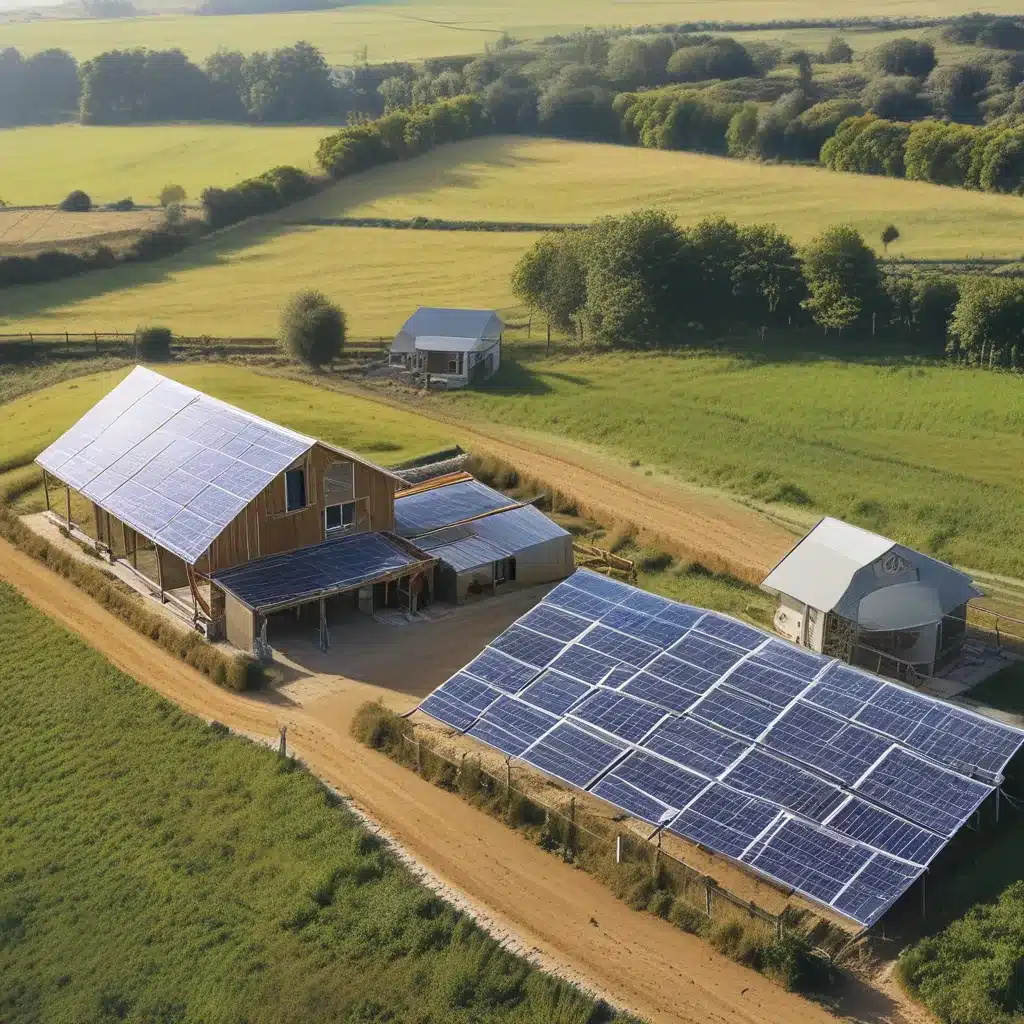
The Hidden Superpower of Solar for Rural America
As a city dweller, I’ll admit I had a rather romanticized view of rural life. I pictured old farmhouses, miles of golden wheat fields, and a peaceful quiet that city folk could only dream of. But when I had the opportunity to visit my cousin Jenna’s farm in the heartland, I quickly realized there was a lot more to it.
The sheer amount of work required to keep a farm running smoothly was staggering. From tending to the crops and livestock to maintaining all the equipment and buildings, Jenna and her family were constantly on the move. And the financial strain of it all? Let’s just say my city paycheck was looking pretty cushy in comparison.
That’s when Jenna dropped a bombshell on me. “You know, we’ve been looking into solar power for the farm. It could be a total game-changer for us.” A game-changer? In rural America? I had to know more.
Powering the Heartland with the Sun’s Energy
Turns out, solar energy is quickly becoming a lifeline for agricultural and rural communities across the United States. Thanks to programs like the USDA’s Rural Energy for America Program (REAP), farmers, ranchers, and small businesses in remote areas are gaining access to affordable, renewable power.
“The REAP program has been a game-changer for us,” Jenna explained. “They helped us get a loan to install solar panels on our barn and outbuildings. Now we’re generating most of our own electricity, which has saved us a ton on our utility bills.”
And Jenna’s farm is just the tip of the iceberg. According to the USDA’s energy programs, solar installations on agricultural properties have skyrocketed in recent years. In 2020 alone, the agency provided over $150 million in loan guarantees and grants to support renewable energy and energy efficiency projects in rural America.
But the benefits of solar power go beyond just cost savings. As some farmers have pointed out, solar can also provide a reliable source of income. By leasing out unused land to solar developers, farmers can generate a steady stream of revenue to help weather the ups and downs of the agricultural industry.
Overcoming the Challenges of Rural Solar
Of course, going solar in rural areas isn’t without its challenges. For one, the upfront costs of installing a system can be daunting, even with government incentives. And then there’s the issue of grid connectivity – many remote farms and ranches are located far from the nearest power lines, making it difficult to integrate solar into the existing infrastructure.
But innovative companies and supportive policies are helping to overcome these obstacles. Take the case of Solar As Systems Inc., a leading provider of solar solutions for agricultural and rural properties. They’ve developed specialized off-grid and microgrid systems that can operate independently, reducing the need for costly grid connections.
“Our team works closely with farmers and ranchers to design custom solar solutions that meet their unique energy needs,” explained the company’s CEO, Sarah Wilkins. “We understand the challenges of rural living, and we’re committed to helping our customers achieve energy independence and long-term cost savings.”
And the benefits of these solar systems go beyond just the bottom line. Many farmers are also using their solar installations to power innovative new technologies, from precision irrigation systems to autonomous farm equipment. By harnessing the power of the sun, they’re not only reducing their carbon footprint but also boosting their overall productivity and efficiency.
The Environmental and Social Impact of Rural Solar
But the benefits of solar power in rural America extend even further, touching on critical environmental and social issues. For one, the widespread adoption of renewable energy in agricultural communities can play a significant role in combating climate change.
“The emissions from traditional fossil fuel-powered farms and ranches are a major contributor to global greenhouse gas levels,” explains Dr. Amelia Flores, an environmental scientist at a local university. “By transitioning to solar, these rural areas can dramatically reduce their carbon footprint and help lead the way towards a more sustainable future.”
And it’s not just the environment that stands to benefit. Solar power is also creating new economic opportunities in rural communities that have long struggled with job scarcity and population decline.
“When we installed our solar system, we needed to hire a local crew to handle the installation and maintenance,” Jenna told me. “That brought in some much-needed extra income for a few families in our small town. And now we’re even seeing solar-related businesses popping up to serve the growing demand.”
The Future of Solar in Rural America
As I listened to Jenna talk about the transformative power of solar, I couldn’t help but feel a newfound appreciation for the resilience and ingenuity of rural America. These communities, long overlooked and underserved, are now leading the charge towards a more sustainable and self-reliant future.
And the numbers speak for themselves. According to the USDA, the amount of renewable energy capacity installed on farms and rural small businesses has increased by over 150% in the past decade. That’s a testament to the hard work, determination, and forward-thinking of people like Jenna and her family.
So, the next time you drive through the countryside, take a moment to look at the rooftops and fields. Chances are, you’ll see the shimmering panels of a solar array, harnessing the power of the sun to light up homes, power equipment, and transform rural communities. It’s a hidden superpower that’s quietly but surely changing the face of America’s heartland.


